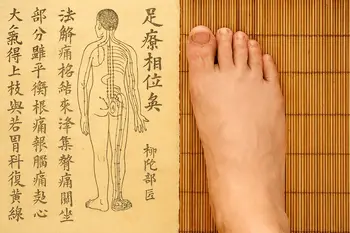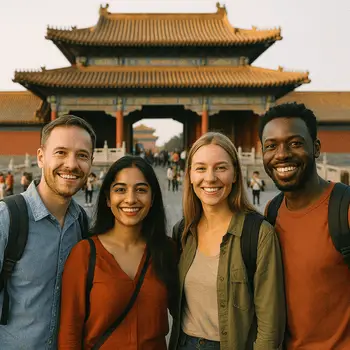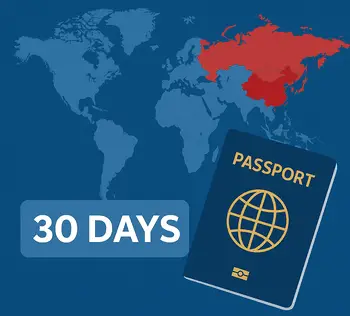
Reflexology, known in Mandarin as 足疗 (zú liáo) or 脚底按摩 (jiǎo dǐ àn mó), is a therapeutic practice deeply rooted in Traditional Chinese Medicine (TCM).
While Western reflexology emphasizes relaxation and stress relief, Chinese reflexology integrates centuries of medical philosophy, focusing on energy flow (Qi), meridians, and organ health.
This article explores the origins, techniques, benefits, and modern applications of reflexology in Chinese culture, while comparing it to Western approaches.
By the end, you’ll understand why reflexology remains a cornerstone of holistic wellness in China and beyond.
The Meaning of Reflexology in Chinese
- Formal term: 足疗 (zú liáo) – literally “foot therapy”
- Informal term: 脚底按摩 (jiǎo dǐ àn mó) – “foot bottom massage”
- Dictionary definition: 反射疗法 – reflex therapy
These terms highlight the dual nature of reflexology in China: a respected medical practice and a popular wellness activity.
Historical Roots of Reflexology in China
Reflexology in Ancient Texts
- The earliest references to foot therapy appear in The Yellow Emperor’s Classic of Internal Medicine (Huangdi Neijing), dating back over 2,000 years.
- Ancient physicians believed stimulating the feet could influence organ systems through meridians.
Cultural Significance
- Foot massage houses (足疗馆) are common in Chinese cities, blending medical tradition with social relaxation.
- Reflexology is often paired with acupuncture, cupping, and herbal medicine.
How Chinese Reflexology Works
The Theory of Qi and Meridians
- Qi (vital energy) flows through meridians.
- Blockages in these pathways cause illness.
- Reflexology stimulates points on the feet to restore balance.
Reflex Zones in Chinese Reflexology
Chinese reflexology charts differ from Western ones:
| Organ/System | Chinese Reflexology Location | Western Reflexology Location |
|---|---|---|
| Heart | Below the ball of the foot | On the foot arch |
| Thyroid | Ball of the foot | Big toe |
| Stomach | Inside edge of both feet | Below ball of left foot |
| Liver | Outer quadrant of right foot | Large area under ball |
| Kidney | Higher and larger | Smaller, lower position |
Techniques Used in Chinese Reflexology
Pressure and Intensity
- Chinese reflexology: Stronger, deeper pressure, sometimes uncomfortable.
- Western reflexology: Gentle, relaxing strokes.
Common Tools
- Wooden sticks or rollers
- Herbal foot soaks before treatment
- Manual thumb pressure on reflex points
Benefits of Reflexology in Chinese Medicine
Physical Benefits
- Improves blood circulation
- Relieves headaches, back pain, and digestive issues
- Supports kidney and liver health
Mental and Emotional Benefits
- Reduces stress and anxiety
- Promotes better sleep
- Enhances overall relaxation
Preventive Health
- Regular reflexology is believed to strengthen immunity and balance organ function.
Reflexology in Modern China
Wellness Industry
- Reflexology spas are widespread in cities like Shanghai and Beijing.
- Treatments are affordable and often combined with tea service.
Integration with Healthcare
- Some hospitals in China incorporate reflexology into rehabilitation programs.
- Cancer patients may receive reflexology to reduce fatigue.
Reflexology vs. Western Approaches
| Aspect | Chinese Reflexology | Western Reflexology |
|---|---|---|
| Philosophy | Qi, meridians, TCM | Nerve pathways, relaxation |
| Pressure | Strong, therapeutic | Gentle, soothing |
| Focus | Organ health | Stress relief |
| Tools | Wooden sticks, herbs | Hands only |
How to Say Reflexology in Chinese
- Formal: 足疗 (zú liáo) – “foot therapy”
- Informal: 脚底按摩 (jiǎo dǐ àn mó) – “foot massage”
Example sentences:
- 昨天我去享受了一次足疗。 (Yesterday, I went for reflexology.)
- 我朋友邀请我一起去做脚底按摩。 (My friend invited me for a foot massage.)
Practical Guide: Experiencing Reflexology in China
What to Expect
- Foot soak in warm herbal water
- 45–60 minutes of targeted massage
- Optional add-ons: shoulder massage, cupping, or scraping (刮痧)
Tips for Visitors
- Ask for 中等力度 (zhōngděng lìdù) – medium pressure if you’re new.
- Be aware: some points may feel painful, which practitioners interpret as signs of imbalance.
- Prices range from ¥80–¥200 ($12–$30 USD) depending on location.
Scientific Evidence and Research
- Studies suggest reflexology may reduce pain, anxiety, and fatigue in cancer patients.
- Research shows improved circulation and stress reduction, though more clinical trials are needed.
- Reflexology is recognized as a complementary therapy by the World Health Organization (WHO).
Sources and Further Reading
- Cambridge Dictionary – Reflexology in Chinese
- How to Say Reflexology in Mandarin
- Chinese vs. Western Reflexology
- World Health Organization – Traditional Medicine
Conclusion
Reflexology in Chinese culture is more than a massage—it’s a holistic healing practice rooted in thousands of years of medical philosophy.
Whether you’re seeking relaxation, preventive care, or deeper connection with TCM, reflexology offers a unique path to wellness.
By understanding its history, techniques, and cultural significance, you can fully appreciate why reflexology remains a vital part of Chinese health traditions.


